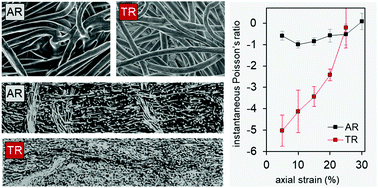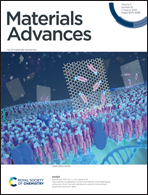Towards textile metamaterials: a pathway to auxeticity and tensegrity in a needle-punched nonwoven stiff felt†
Abstract
Auxetics are a class of mechanical metamaterials that show a negative Poisson's ratio, which has been of interest as a mechanism to provide enhanced performance in, for example, composite materials and energy dissipation structures. Given this interest, there is a need to realize this behavior in a practical fashion. In this work, we move towards identifying and understanding such materials by examining the out-of-plane auxeticity of fiber networks contained in stiff felt nonwovens. The network contains fiber connections that provide a structure which is intermediate to a physically entangled nonwoven and a composite. The results show that these nonwovens display an out-of-plane auxetic response that is at least partially reversible. Additionally, it was found that the elastic-plastic behavior seen at larger strains can be described using concepts of multistable tensegrity structures, supporting the suggestion that tensegrity and auxeticity can coexist in some metamaterial structures.



 Please wait while we load your content...
Please wait while we load your content...